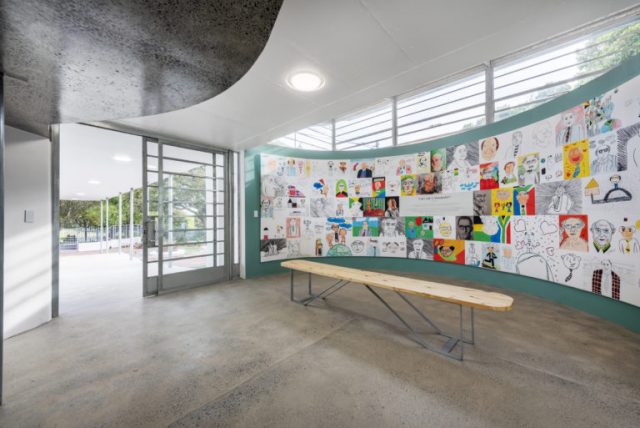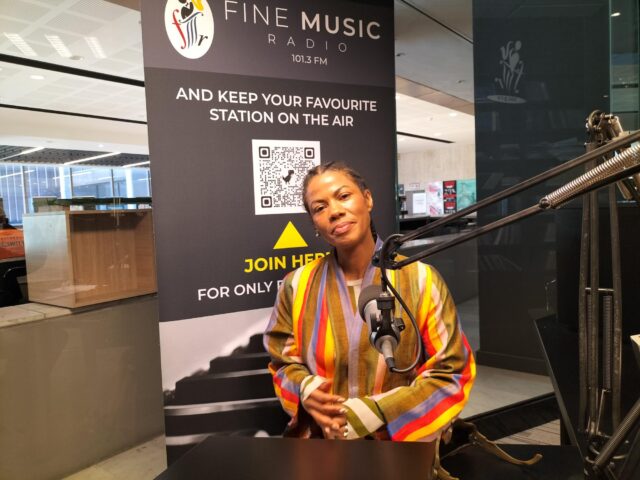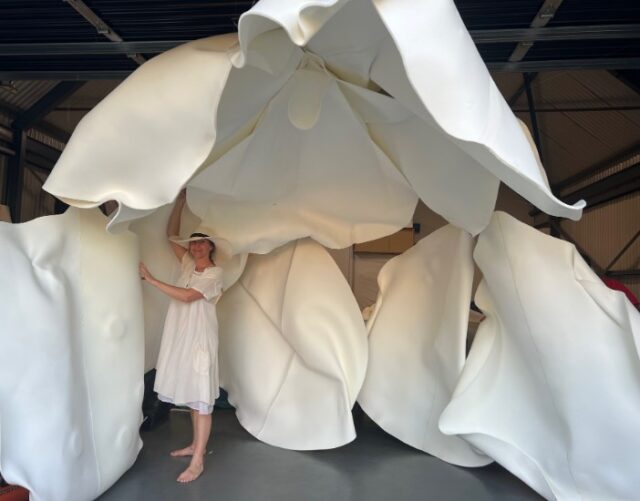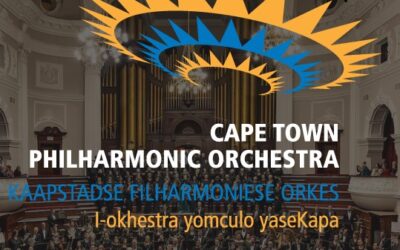The House of Hope, an architectural manifestation of the late Denis Goldberg’s dream, promises to be an innovative paradise for the youth of Hout Bay.
Emma Dollery gives a full report about this project in The Daily Maverick.
Snaking between the quaint (but proud) farm-style heritage buildings that make up the Hout Bay Museum is a new structure, whose open-aired corridor, lined with columns of galvanised steel, leads to the heart (or at least the hearth) of the House of Hope, an arts and culture community centre that is re-envisioning what youth education can look like.
Enter the naturally lit foyer and you are greeted with the face of the mastermind behind the operation – the late Denis Goldberg. Or, more accurately, over 100 portraits of Goldberg in all manner of shapes and sizes.
There is Goldberg with a bright red, Rudolph-esque nose. There he is with a wide mouth, empty aside from two extremely sharp canines. Goldberg, looking like he’s just had dinner with Tony Soprano, sporting a tank-top, muscles, and an impressively defined five-o-clock shadow. Goldberg, yellow and very bald wearing a pair of sunglasses that say “the dream” in block letters. Goldberg, standing on an ambiguous mound, holding two puffy hearts. Next to that, bearing no resemblance to Goldberg at all, an interesting depiction of a reindeer.
“That one looks like FW de Klerk”, jokes Jo Noero, founder of Noero Architects, an award-winning Cape Town architectural firm, and the architect in charge of overseeing the design and construction of the House of Hope, “and that one like the leader of North Korea”.
Noero offers an explanation: “This was a really lovely project run by the Lalela Art Project, a local art enrichment programme. They held a portrait drawing competition for kids in this area and a part of the Cape Flats. They taught the kids about Denis [Goldberg] who he was, showed them his picture, and then said, right, now draw him. We collected these pictures, scanned them, and made them into a giant wall mural which is 9m by 2,5m. When we open, we are going to invite all of the artists here, give each one a pen, and have them sign their work and get their picture taken with their families.
“And there’s Denis,” Noero points to yet another artfully rendered face, “an unrequited communist with a speech bubble that says, “I love God”. He [Goldberg] is probably sitting up there saying ‘This is really funny’.”
This mural, in all of its accidental humour and multifaceted glory, encapsulates both the playful freedom that Goldberg hoped to manifest in the House of Hope, as well as the legacy of the man himself. Smack in the centre of Goldberg’s multiple faces is one of his most famous quotes: “Life! Life is wonderful”.
Goldberg was an anti-apartheid struggle hero who, according to Noero, “has got a treasured position in South African struggle politics”. After the infamous raid of Liliesleaf Farm, a safe house for ANC activists, by the police in 1963, Goldberg was the only white man to be sentenced alongside Nelson Mandela and nine others at the Rivonia trials of 1964.
A section of the House of Hope is dedicated to an exhibition space that will commemorate Goldberg’s life story. But, as Noero clarifies, the exhibition will not be monumentalising or idealising Goldberg, “it is none of this adulation of the Mandela mania that grabbed us”.
Arts and culture give people an opportunity to think for themselves
According to Noero, who worked closely with him on conceptualising the House of Hope for several years before he died, Goldberg believed that “arts and culture give people an opportunity to think for themselves and the confidence to be people in their own rights”. In the creation of the cultural centre, Goldberg “wanted a building where kids could come and they could just engage in art, music, dance, whatever it was, through structured projects”.
The idea is ultimately what Noero calls a “non-conformist one. It’s about creating a space, giving children freedom and letting them feel that they can express themselves”. An idea that has been designed and built into the very structure, the architectural integrity, of the House of Hope.
WHERE: House of Hope 4 Andrews Road, Scott Estate, Hout Bay, 7806 Cape Town, South Africa
INFO: Visit | Facebook | Instagram
PHOTO: Denis Goldberg House of Hope. The large mural was designed by Brendon Bell-Roberts from Art Africa. Image: Uno Pereira
See the full article by Emma Dollery in The Daily Maverick






